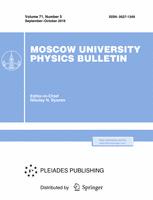The goals of measuring the polarization degree of an accelerator beam, controlling the luminosity, and providing spatial data on the reaction vertex were defined for the development of a detector system based on silicon tracking telescopes. The use of the developed techniques resulted in a time resolution of ∼1 ns and an accuracy of ∼1–2% for the reconstruction of the kinetic energy of outgoing protons and deuterons in a range of 1.5–50 MeV. The results of experimental and model studies demonstrate that the achieved high performance of the system can be applied to extend the field of physical research with the application of silicon tracking telescopes. This extension includes the experimental study of the issues of the spin physics of $pn$-interactions by detecting the low-energy products of the $pd\to ppn$, $pd\to pp\Delta^0$, and $\mathbf{pd}\to pd$ reactions with a novel experimental data.
29.40.Wk Solid-state detectors
13.88.+e Polarization in interactions and scattering
29.25.Pj Polarized and other targets
$^1$Faculty of Physics, Moscow State University, Moscow, 119991, Russia
$^2$Skobel’tsyn Institute of Nuclear Physics, Moscow State University, Moscow, 119991, Russia



